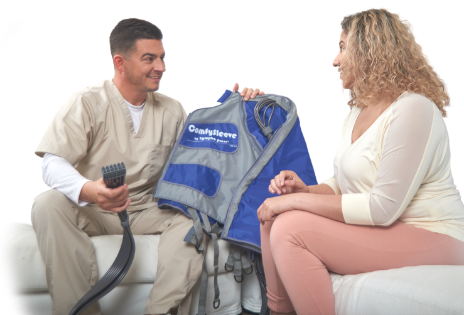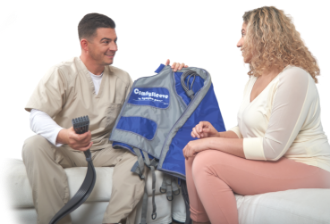Looking for
Medical Solutions Supplier?
You’re in the right place!


The use of a Peripheral Calibrated Gradient Compression Pump for the Treatment of Chronic Venous Leg Ulcers.
Patel M, Pesek E, Lantis JC II. Presented at Symposium on Advanced Wound Care, Spring, May 2019, San Antonio TX USA.
Introduction
Venous Leg Ulcers (VLU) can be a difficult to manage wound population as the underlying vascular compromise can lead to continued peripheral ede-ma and excessive drainage, which preclude ulcer healing. Calf muscle pump function and its failure may often con- found healing in the lower leg wound. Many of these patients are not able to ambulate due to obesity and/or comorbidities. Therefore, replacing the function of the calf muscle pump with intermittent compression may serve to replace this function. Com-pression therapy has been a mainstay of VLU therapy, but generally is applied in dressing form. We looked at the use of a calibrated gradient com-pression pump (CGCP) in conjunction with multilayer compression therapy and its effects of healing chronic wounds.
Methods
Five patients with VLU that were over 2 months in age were dressed in triple layer compression and told to use a CGCP at home twice a day at a mini-mum pressure of 40mmHg for 75 minutes. Wound size, characteristics, pain level, and leg circumference were measured weekly for up to 8 weeks to see the effects of adjunctive CGCP at home.
Results
During each of the patient visits, we measured wound size and lower extremity circumference at the levels of the ankle, mid-calf and upper calf.In the 5 patients treated with CGCP, there was an average decrease in wound size of 76% with 4 patients hav- ing complete wound closure by the last visit. In regard to leg circumference, there was an average of 2% decrease in circumference in upper calf (range: 0 – 4.5%), a 9% decrease at mid-calf (range 3.5-14.8%), and a 8.5% decrease at the level of the ankle (range: 1.2-16.7%).
Conclusion
Part of the physiology behind the venous leg ulcerations is the lack of edema control. The use of a calibrated gradient compression pump saw a significant decrease in leg circumference and wound size. Compliance with CGCP therapy varied with each patient initially, but all were able to complete 75 minutes of therapy twice a day with at least 40mmHg. At the end of four weeks, patients saw a reduction in leg circumference compared to the start of the study. Most patients saw a significant decrease in wound size with four patient have complete wound healing. Most patients also noted decrease in exudate, odor, and pain after prolonged use. CGCP may be a useful adjunct in helping heal difficult VLUs in patients with significant lower extremity edema.

